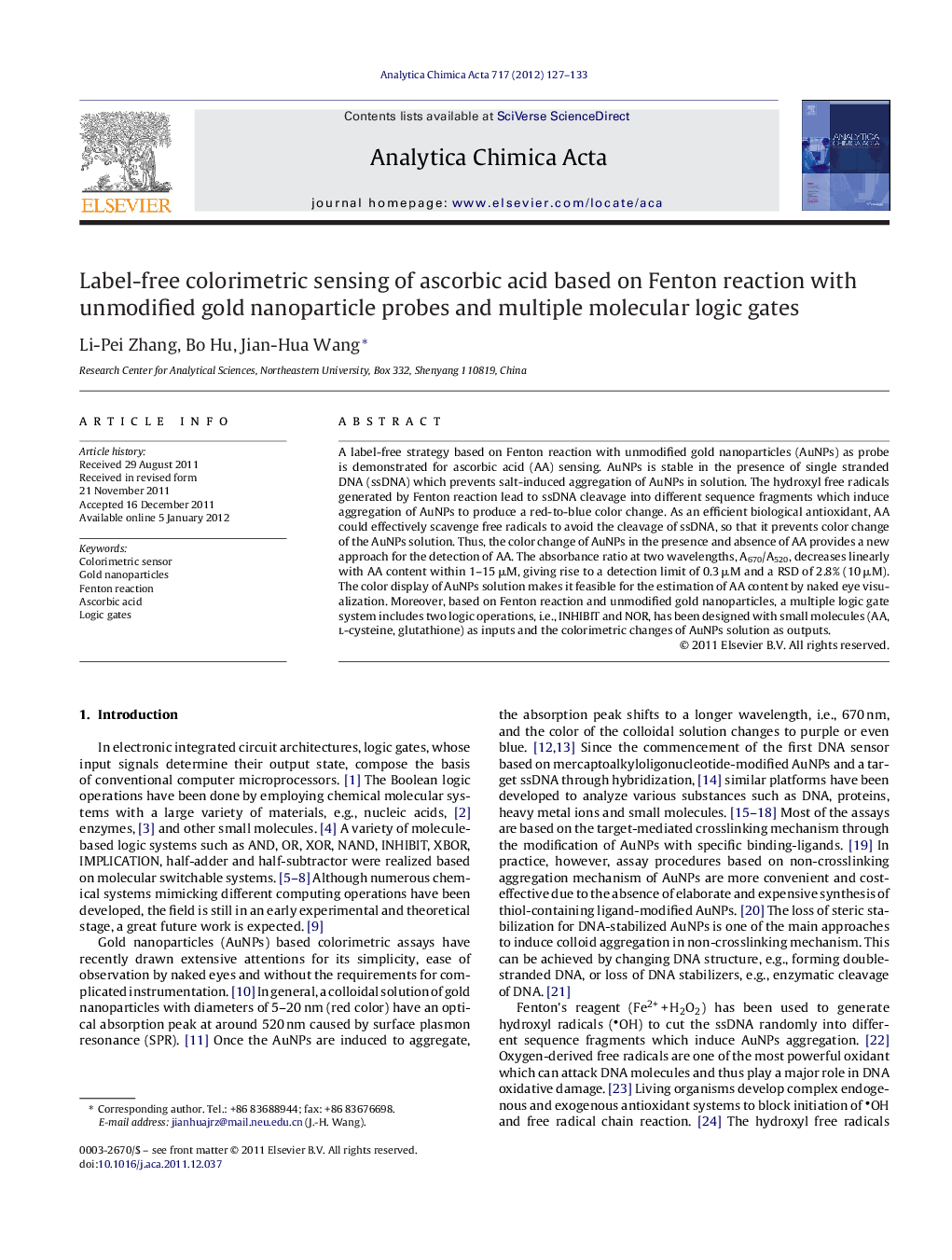| Article ID | Journal | Published Year | Pages | File Type |
|---|---|---|---|---|
| 1166365 | Analytica Chimica Acta | 2012 | 7 Pages |
A label-free strategy based on Fenton reaction with unmodified gold nanoparticles (AuNPs) as probe is demonstrated for ascorbic acid (AA) sensing. AuNPs is stable in the presence of single stranded DNA (ssDNA) which prevents salt-induced aggregation of AuNPs in solution. The hydroxyl free radicals generated by Fenton reaction lead to ssDNA cleavage into different sequence fragments which induce aggregation of AuNPs to produce a red-to-blue color change. As an efficient biological antioxidant, AA could effectively scavenge free radicals to avoid the cleavage of ssDNA, so that it prevents color change of the AuNPs solution. Thus, the color change of AuNPs in the presence and absence of AA provides a new approach for the detection of AA. The absorbance ratio at two wavelengths, A670/A520, decreases linearly with AA content within 1–15 μM, giving rise to a detection limit of 0.3 μM and a RSD of 2.8% (10 μM). The color display of AuNPs solution makes it feasible for the estimation of AA content by naked eye visualization. Moreover, based on Fenton reaction and unmodified gold nanoparticles, a multiple logic gate system includes two logic operations, i.e., INHIBIT and NOR, has been designed with small molecules (AA, l-cysteine, glutathione) as inputs and the colorimetric changes of AuNPs solution as outputs.
Graphical abstractAscorbic acid is detected based on its prevention on the color change of ssDNA–AuNPs system, by using both naked eye visualization and visible absorption spectroscopy.Figure optionsDownload full-size imageDownload as PowerPoint slideHighlights► Ascorbic acid (AA) prevents ssDNA cleavage and prohibits color change of ssDNA–AuNPs system, deriving a novel approach for AA detection. ► Ascorbic acid is assayed by visible spectroscopy and naked eye visualization, facilitating fast detection of AA in biological samples. ► A multiple logic gate system is designed with small molecules as inputs and the colorimetric changes in the AuNPs solution as outputs.
